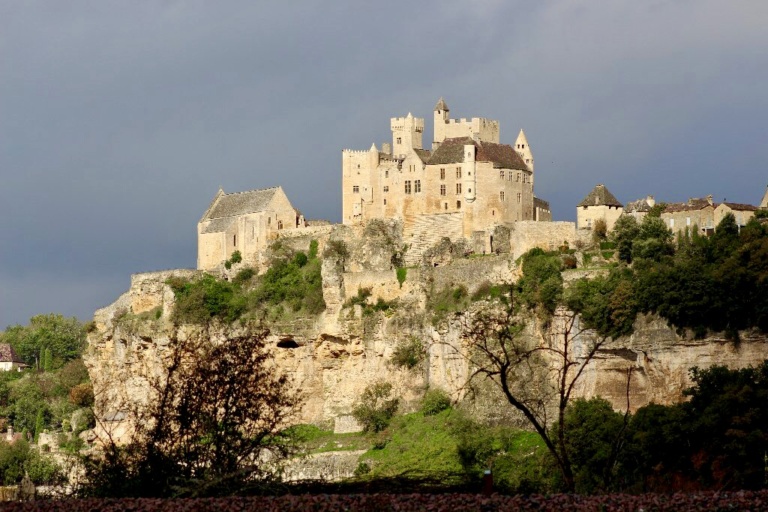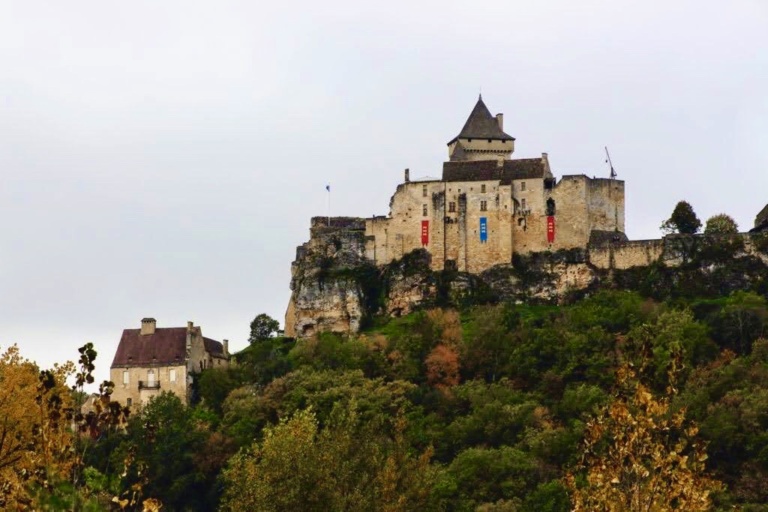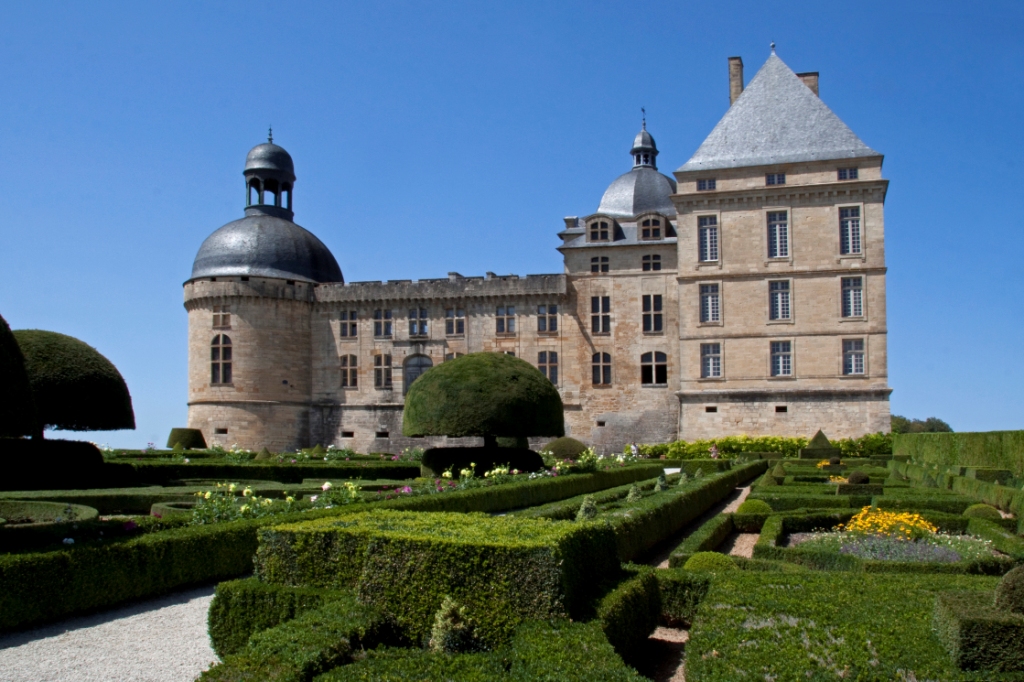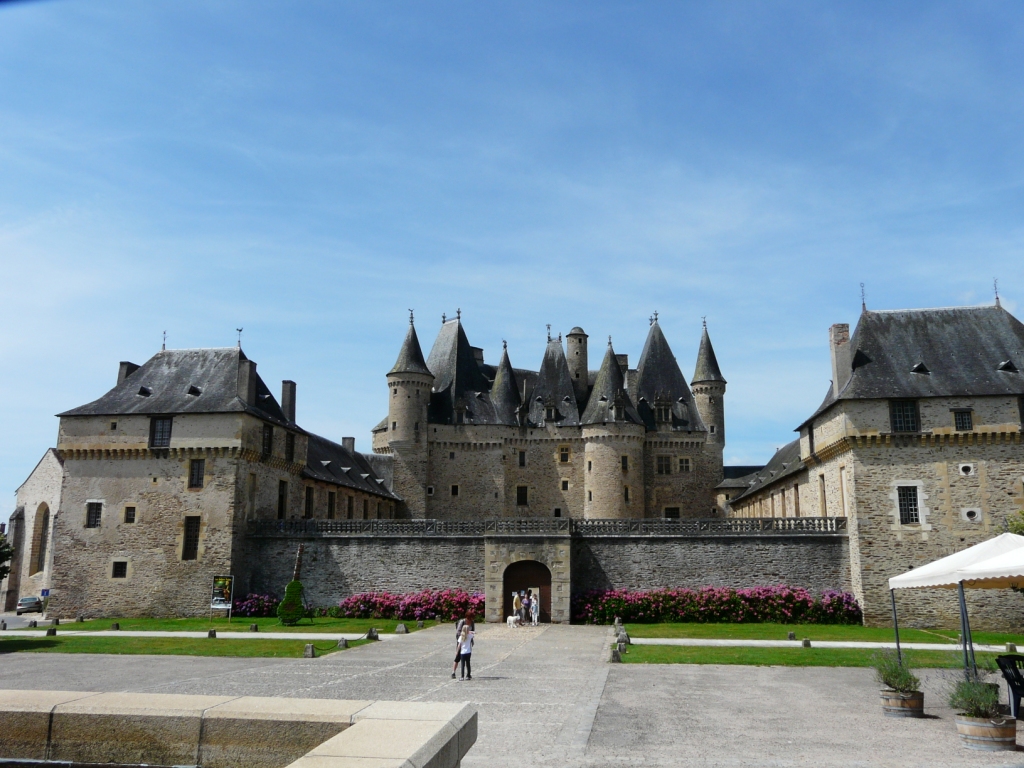Chateau Castelnaud in the Dordogne
Chateau Castelnaud
Chateau Castelnaud is a stunning medieval fortified chateau that sits at the meeting points of the Dordogne and Ceou Rivers.
This heritage listed medieval castle has stunning views across the Dordogne valley and offers a unique glimpse into the history of the time.
Surrounding the chateau is the lovely village of Castelnaud-la-Chappelle, one of Frances Les plus beaux villages de France or designated Beautiful Villages. Read more about Castelnaud-la-Chappelle on our Beautiful Villages Page.
History | Chateau Castelnaud
Castelnaud sits high above the Dordogne River in the Dordogne region of Perigord Noir. Castelnaud – or Castelnau, meaning the “new castle” – was founded in the 12th century as a defensive fortress and faces its once arch enemy Chateau Beynac across the Dordogne river.
In 1214 during the Albgensian crusades Simon de Montfort took the castle from Bernard de Casnac, a supporter of the Cathars (who were also known as the Albgensian) . The Cathars dualist religious beliefs led to them being castigated as “heretics” and Simon de Montfort was sent from the north to crush the Cathars ‘heresy’. De Casnac, regained it a year later and hanged all members of the occupying garrison. He was the driven out again, this time by the Archbishop of Bordeaux, who ordered the castle be burned.
The chateau was rebuilt in the 13th century during the 100 years war and from 1337 came under the rule of the Caumont family and was part of English ruled Aquitane. Over the next 100 years many battles took place between Castelnaud and Beynac,its French controlled enemy across the river. The castle change hands several times between the French and the English, resolved only by the French siege in 1442.
The Hundred Years War was to continue until 1453 after which the Caumont family regained ownership of the castle which they repaired and substantially reinforced. They strengthened its defensive capabilities: gun ports were installed in the lower wall and the new barbican, and the artillery tower was erected. Much of the castle we see today dates from this period.
A large new main building was also erected, to try to make the medieval fortress more comfortable. Nevertheless, the Caumonts left Castelnaud to live in their new château at Milandes.
During France’s Wars of Religion (1562-98), the castle was left in the hands of Captain Geoffroy de Vivans, a Protestant soldier nicknamed “The Battler”, who was born at Castelnaud. He was so feared that it was never attacked during that time.
In the 17th century, the château was rarely inhabited. Abandoned after the French Revolution (1789), it fell more and more into disrepair and, in the 19th century, even served as a stone quarry.
In 1966, it was listed officially as an Historic Site and has since been brought back to life through a series of outstanding restoration projects. Its “Museum of Medieval Warfare” was founded in 1985.



